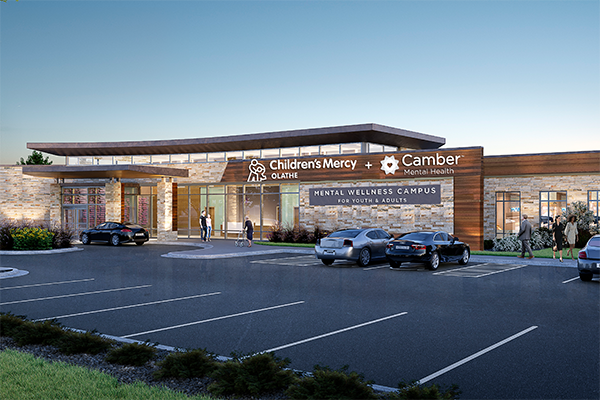Debunking Common Misconceptions About Psychiatric Medication

Mental illness is one of the most common health conditions in the United States. In a given year, 1 in 5 adults and 1 in 6 children ages 6 to 17 experience some form of mental illness. Symptoms differ greatly from person to person, and that is even true within the same diagnoses. While one person with depression may experience temporary, mild symptoms that they can manage on their own, another person may experience severe symptoms that feel debilitating and make it difficult for them to manage daily life. When clinically necessary, some adults and children may need to take psychiatric medications for more challenging or persistent symptoms and diagnoses.
However, some patients, parents and caregivers may be hesitant about psychiatric medications for themselves or for someone they care for. Two big reasons for that are fear and shame. “There is a stigma around mental illness and the use of medications,” explains Dr. Jyotsna Adma, Associate Medical Director of Psychiatric Services, at Camber Children’s Mental Health (previously KVC Hospitals).
“People who seek help or treatment for their mental illness may be seen as weak or unable to control themselves,” says Dr. Adma. “That is simply not true. Seeking help is a sign of strength.”
In a recent interview with KSHB 41, NBC news affiliate in Kansas City, Dr. Adma shared common misconceptions about mental illness and the role of medication in treatment. Click here to watch the interview.
Below, we dive deeper into misconceptions, the ways psychiatric medications can benefit a person’s quality of life, and what someone should do if they want to learn more about medications for mental illness.
Common Medication Misconceptions
Most psychiatric medications are not addictive. People can confuse medication withdrawal symptoms with addiction if there are changes in dosing or a medication is stopped. Some patients may experience temporary withdrawal symptoms as their body adjusts to weaning off a medication.
“Whenever a child (in our care) starts a new medication, nurses monitor them closely for potential side effects,” Dr. Adma explains. “We work to achieve the best possible outcome and make adjustments as needed.”
If someone is having severe withdrawal symptoms or other side effects related to a medication, it is important that they speak with their physician and/or a medical professional. Open communication and honesty about symptoms are important so that your healthcare providers can help you find the medication or non-medication treatment approach that best fits your needs and makes you feel better.
Improved Quality of Life
Medications are used to help manage symptoms, improve how you feel and impact your overall wellbeing. Just like someone may need to take medication to help with their diabetes, heart condition, or another physical illness, they may need medication to help with their symptoms from depression, anxiety, or another mental illness.
Psychiatric medications help children, teens and adults
- regulate their emotions,
- stabilize their mood,
- relieve anxiety,
- reduce impulsive behavior, and
- improve attention span
They can also help decrease the risk of substance misuse, self-harm and suicide.
“We expect emotions, thoughts and behavior to improve with psychiatric medication treatment,” Dr. Adma says.
Medication is Just One Treatment Tool
Medication is not a cure and not all treatment approaches result in medication. But therapy should be a part of all treatment plans. It is the first option for care. “I recommend some form of therapy in every case, regardless of symptom intensity,” Dr. Adma says. “At Camber, if we have to treat with medication, it is combined with therapy,” she continues. “Both are very beneficial for the patient and their family.”
 Therapy is not one size fits all because no two people are alike. When most people think of therapy, they think of traditional talk therapy, which is effective for many people, and there are also expressive therapies like art, music, dance, horticulture, animal-assisted, and more that allow people to express themselves creatively. Additionally, there are non-invasive psychotherapy treatments like neurofeedback and Eye Movement Desensitization and Reprocessing (EMDR).
Therapy is not one size fits all because no two people are alike. When most people think of therapy, they think of traditional talk therapy, which is effective for many people, and there are also expressive therapies like art, music, dance, horticulture, animal-assisted, and more that allow people to express themselves creatively. Additionally, there are non-invasive psychotherapy treatments like neurofeedback and Eye Movement Desensitization and Reprocessing (EMDR).
With therapy, it’s important for each person, in partnership with their licensed mental health professional, to choose the approach that is most comfortable and effective based on their unique life experiences.
 Practicing positive coping mechanisms and focusing on healthy lifestyle changes, such as physical exercise or meditation, are also very beneficial to someone’s wellbeing and mental health.
Practicing positive coping mechanisms and focusing on healthy lifestyle changes, such as physical exercise or meditation, are also very beneficial to someone’s wellbeing and mental health.
Mental Illness Can Affect Children and Teens
Mental health disorders in children and teens can affect how they learn, regulate their emotions, make decisions and interact or socialize with others.
“Half of all mental health disorders begin in childhood, before age 14,” Dr. Adma says. “The main reason children are hospitalized is that they are at risk of harming themselves or others.”
According to the American Foundation for Suicide Prevention, suicide is the second leading cause of death for people ages 10 to 34.
When a child is admitted to Camber for psychiatric treatment, our team conducts a complete physical and biopsychosocial evaluation. “We need to know if the child is experiencing a mental illness or reacting to their environment,” Dr. Adma explains. “Factors at school or in the home could be responsible for challenging emotions and behaviors.”
Family history, life experiences (such as trauma) and biology (genetics or brain chemistry) are all contributing factors to a child or teen’s mental wellbeing.
“We look at symptom intensity, the level of disruption to the child’s life and the impact on the family,” says Dr. Adma.
Once the initial assessment is completed, the team creates an individualized plan for each child. Medication is prescribed only when it is considered a clinically necessary part of treatment. “We educate a child’s guardians about the risks, benefits, side effects and alternative approaches and get their consent to begin treatment,” Dr. Adma explains.
Common behavioral and mental health conditions that affect children and teens include:
- Attention deficit hyperactivity disorder (ADHD)
- Anxiety disorder
- Depression and other mood disorders
- Post-traumatic stress disorder (PTSD)
- Disruptive behaviors disorders
- Learning and developmental disabilities
- Autism spectrum disorder
- Substance use disorder
- Eating disorders
What Parents Can Do
Children and teens go through emotional ups and downs, and behaviors change as they grow and develop. Sometimes, it can be hard to tell what is normal or more concerning.
There are signs and symptoms to watch for if you think your child or teen may be struggling.
Younger children:
- Frequent tantrums and uncontrollable anger
- Excessive worries and fears
- Frequent stomach aches and headaches
- Struggles in school
- Sleeping too much or too little
- Can’t sit quietly and are constantly moving
- Difficulty making friends or playing with other children
- Not reaching or delayed in reaching developmental milestones
Older children and teens:
- Extreme changes in mood
- Sleep or appetite changes
- Low energy
- Disinterest in things they normally enjoy
- Social withdrawal
- Problems with concentration and memory
- Self-harming behaviors
- Drug, alcohol or tobacco use
- Excessive exercising or dieting
- Suicidal thoughts
Seek immediate help if your child’s behavior is unsafe or they talk about wanting to harm themselves or others.
How Camber Supports Children and Families
Camber provides caring and supportive psychiatric treatment for youth ages 6-17 who are experiencing behavioral or mental health challenges.
The goals of treatment include:
- Stabilizing the crisis a child is experiencing; identifying the triggers that led to challenging behaviors or emotions
- Identifying the treatment approach that works best for each child to best teach and support healthy and safe behaviors
- Improve the child’s ability to regulate emotions, communicate and promote healthy behavior
- Provide resources and support for the child and their family following discharge
Our main goal is for each child to return home as soon as safely possible with the resources and supports in place to live a healthy and happy life in their community.





